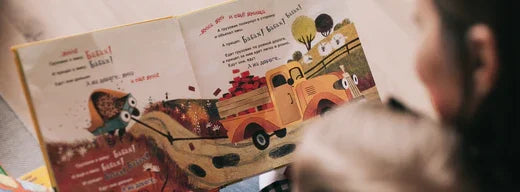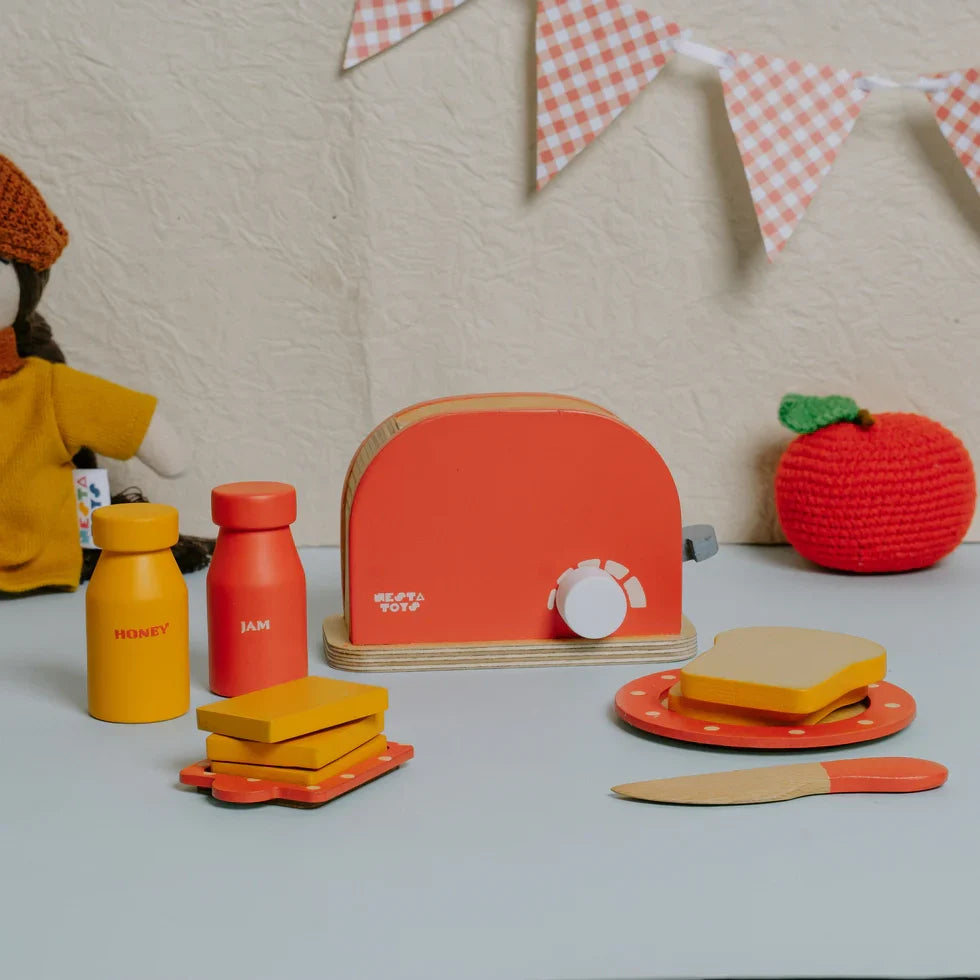Early Learning
Montessori Spindle Box Activity for Kids: Enhancing Numeracy and Counting Skills
Discover the Montessori spindle box activity for children aged 3-6. This hands-on learning experience helps kids understand numeration, counting, and the concept of zero, while fostering fine motor skills. Learn how to replicate the activity at home with simple materials.
Learn moreStereognostic Sense Activity for Kids: Enhancing Touch and Object Identification Skills
Explore a Montessori-inspired activity designed to enhance a child's stereognostic sense. Using blindfolds and a variety of objects, children refine their ability to identify items based on touch. Discover fun at-home activities like mystery boxes and sensory trays to support this learning process.
Learn moreMultiplication Board Activity for Kids: Learn and Memorize Tables | Montessori Method
Help your child master multiplication tables with this engaging Montessori activity. Using a multiplication board and beads, children will practice counting and memorizing basic tables from 1 to 10. Explore fun at-home activities to reinforce multiplication skills and enhance learning.
Learn moreTop 25 Story Books for Kids Between 3-6 Years
Encourage a love for reading during the formative years with our curated list of the top 25 storybooks for kids aged 3-6. These books combine captivating stories, colorful illustrations, and meaningful life lessons to inspire creativity, enhance language skills, and support emotional growth. Ideal for bedtime or story time, they ignite imagination and nurture young minds. The Gruffalo by Julia Donaldson - A delightful rhyming tale about a clever mouse who outsmarts predators in the woods, teaching valuable lessons on problem-solving and courage. Where the Wild Things Are by Maurice Sendak - A whimsical story about a boy journeying through a magical world, inspiring creativity and emotional growth. Room on the Broom by Julia Donaldson - A charming rhyming story that highlights teamwork, acceptance, and friendship, making it perfect for encouraging cooperation and building strong relationships. The Very Hungry Caterpillar by Eric Carle - A colorful journey of transformation that teaches counting, days of the week, and life cycles. Green Eggs and Ham by Dr. Seuss - A fun exploration of trying new things, told in playful rhymes and repetition. The Day the Crayons Quit by Drew Daywalt - A hilarious collection of letters from crayons that use humor, vibrant illustrations, and clever storytelling to teach perspective-taking and problem-solving. Goodnight Moon by Margaret Wise Brown - A soothing bedtime classic that helps establish a calming nighttime routine. Guess How Much I Love You by Sam McBratney - A touching story that celebrates the love between a parent and child, nurturing emotional security and connection. Pete the Cat: I Love My White Shoes by Eric Litwin - A groovy adventure teaching resilience and the importance of staying positive. Brown Bear, Brown Bear, What Do You See? by Bill Martin Jr. - A lively, rhythmic book that introduces colors, animals, and repetitive patterns, making it perfect for early learning and language development. Dragons Love Tacos by Adam Rubin - A quirky story about dragons and their love for tacos, sparking laughter and imaginative play. The Snail and the Whale by Julia Donaldson - A poetic adventure showcasing friendship, exploration, and the beauty of nature. Caps for Sale by Esphyr Slobodkina - A timeless story of problem-solving, perseverance, and humor with playful monkeys. Alexander and the Terrible, Horrible, No Good, Very Bad Day by Judith Viorst - A relatable tale about bad days, teaching kids resilience and perspective. We’re Going on a Bear Hunt by Michael Rosen - A rhythmic adventure encouraging movement, problem-solving, and bravery. If You Give a Mouse a Cookie by Laura Numeroff - A circular tale about cause and effect, with charming illustrations and humor. Harold and the Purple Crayon by Crockett Johnson - Inspires creativity and imagination as Harold draws his own adventures. Llama Llama Red Pajama by Anna Dewdney - A comforting story that addresses bedtime fears, helping children feel reassured while fostering empathy and emotional resilience. Chicka Chicka Boom Boom by Bill Martin Jr. and John Archambault - A fun and engaging alphabet book filled with rhythm, rhyme, and vibrant illustrations, making learning letters an enjoyable experience. Don’t Let the Pigeon Drive the Bus! by Mo Willems - Interactive humor that teaches responsibility and decision-making. A Sick Day for Amos McGee by Philip C. Stead - A sweet story of friendship and kindness with beautifully detailed illustrations. Little Blue Truck by Alice Schertle - A tale of teamwork and helping others, with charming farmyard animals. Cloudy with a Chance of Meatballs by Judi Barrett - A whimsical story about food falling from the sky, sparking creativity and fun. The Paper Bag Princess by Robert Munsch - A fresh take on classic fairy tales, inspiring children with themes of bravery, independence, and self-confidence. Stellaluna by Janell Cannon - A touching tale of a bat adapting to life with birds, teaching acceptance and understanding. These books are ideal for children aged 3-6, blending engaging narratives with valuable life lessons, fostering language development, and igniting a love for reading.
Learn moreMontessori Smelling Bottles: A Sensory Exploration for Your Child
Enhance your child's olfactory development with Montessori Smelling Bottles. Discover fun activities to refine their sense of smell, improve concentration, and foster curiosity about different scents in their environment.
Learn moreMontessori Thematic Tablets: Enhancing Your Child's Sensory Development at Home
The Montessori Thematic Tablets activity is designed to help children refine their thermic sense through hands-on exploration. This activity involves six pairs of tablets with different heat-conducting properties such as wood, felt, cork, marble, and iron. These materials allow children to experience and differentiate temperatures in a meaningful and engaging way.
Learn moreStep-by-Step Guide to Teaching Reading and Writing with Sandpaper Letters
Montessori Activity Aim To prepare the child remotely for reading by recognizing the symbols and their sounds. To help the child prepare for writing and reading. To make the child aware of the articulation of sounds using visual, muscular, tactile, and auditory senses. To enable the child to take the movement patterns of letter shapes with their writing fingers. To help the child gain muscular memory and retain the movement pattern by running their fingers on the letters. To support the child in recognizing symbols and associating them with sounds as a precursor to reading. Material Description: Sandpaper letters are cut out of sandpaper and pasted onto plaques of wood. The size of the plaque depends on the size of the letter. Each cut-out letter is pasted on the right side of the plaque, leaving clear space on the left. Vowels are mounted on a blue background. Consonants are mounted on a pink background to distinguish between the two. Sixteen green boards are used to represent double sandpaper letters (phonograms) covering "key" sounds not represented by single letters. Sandpaper Letters Activity Description The child is introduced to sandpaper letters after developing a light touch through work with tactile materials and acoustic exercises that help them recognize sounds. 1. Preparation: Sensitize the child’s fingertips before working with the sandpaper letters. Take the child to the display area where sandpaper letters are arranged. 2. Choosing Letters: Select three letters that are distinct in both sound and shape. 3. Three-Period Lesson: First Period: Introduce one letter at a time. Demonstrate how to feel the letter by tracing its shape. Provide the sound of the letter. Encourage the child to think of words containing the same sound while also offering examples yourself. Draw attention to the direction in which the letter is traced. Second Period: Give commands involving the letters, focusing on tracing and repeating the movement pattern while saying the sound. Examples of commands: "Trace 'a'." "Keep 'i' here." "Trace 'r'." "Show me 'a'." Ensure the letters are brought back in order at the end of the exercise. Third Period: Encourage the child to identify each letter and say its sound independently. Inform the child that they can explore these letters and sounds anytime they wish. 4. Interactive Games for Reinforcement: Offer group activities to enrich the learning experience and reinforce the sound-letter association. Suggested At-Home Activities Sand/Salt/Rice Tray: Ask the child to trace the sounds in a tray of sand, salt, or rice. Encourage using different textures such as clay, paints, blocks, beads, collages, strings, or pompoms to form the sounds. Object Collection Game: Create a card for each sound. Ask the child to walk around and collect objects starting with that sound. Repeat this for other sounds as long as the child remains interested Oral Game with Last Sound: Say a word, and have the child identify the last sound and give another word starting with that sound. For example: Bat → Tap → Peacock → King → Goat. Air and Tactile Tracing: Trace the letter in the air while saying its sound. Trace the letter on the child’s back or palm and have them identify or retrieve the corresponding letter. Conclusion:Sandpaper letters provide a multi-sensory approach to learning that integrates tactile, visual, and auditory inputs. By engaging in guided activities and interactive games, the child develops a strong foundation for reading and writing. This hands-on experience not only fosters understanding but also builds confidence, ensuring the child is well-prepared for future literacy milestones.
Learn moreHow to Teach Math Concepts Using the Montessori Trinomial Cube?
The Trinomial Cube activity provides a multi-sensory and engaging experience for children, blending tactile, visual, and logical learning. It lays the foundation for mathematical concepts such as algebra while refining fine motor skills and spatial reasoning. By extending the learning to at-home activities, children can deepen their understanding, apply creativity, and build a strong base for future academic exploration.
Learn moreHow do I play I spy with my little eye game?
The "I Spy" game is a classic and engaging activity that nurtures children's auditory discrimination, phonemic awareness, and vocabulary skills. It is particularly effective in helping children connect the sounds of spoken language with corresponding objects in their environment. This game progresses in stages, moving from simple sound identification to more complex sound analysis, fostering a deep understanding of language and sound patterns.
Learn more












